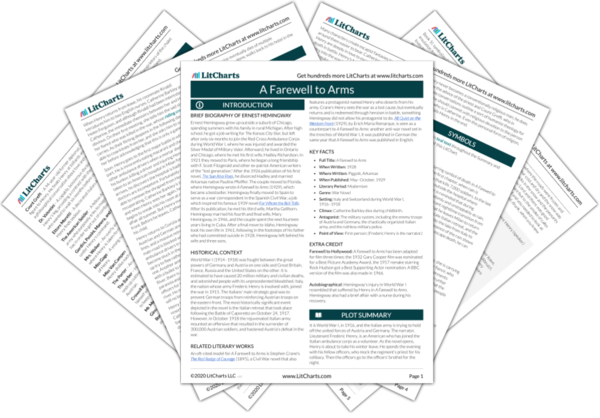AI ToolsNew
Tools to make learning and teaching easier
A Farewell to Arms Study Guide |
Next
Summary
|
Welcome to the LitCharts study guide on Ernest Hemingway's A Farewell to Arms. Created by the original team behind SparkNotes, LitCharts are the world's best literature guides.

Farewell to Hollywood: A Farewell to Arms has been adapted for film three times: the 1932 Gary Cooper film was nominated for a Best Picture Academy Award, the 1957 remake starring Rock Hudson got a Best Supporting Actor nomination. A BBC version of the film was also made in 1966.
Autobiographical: Hemingway's injury in World War I resembled that suffered by Henry in A Farewell to Arms. Hemingway also had a brief affair with a nurse during his recovery.